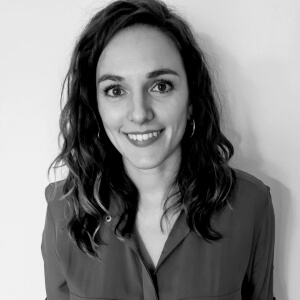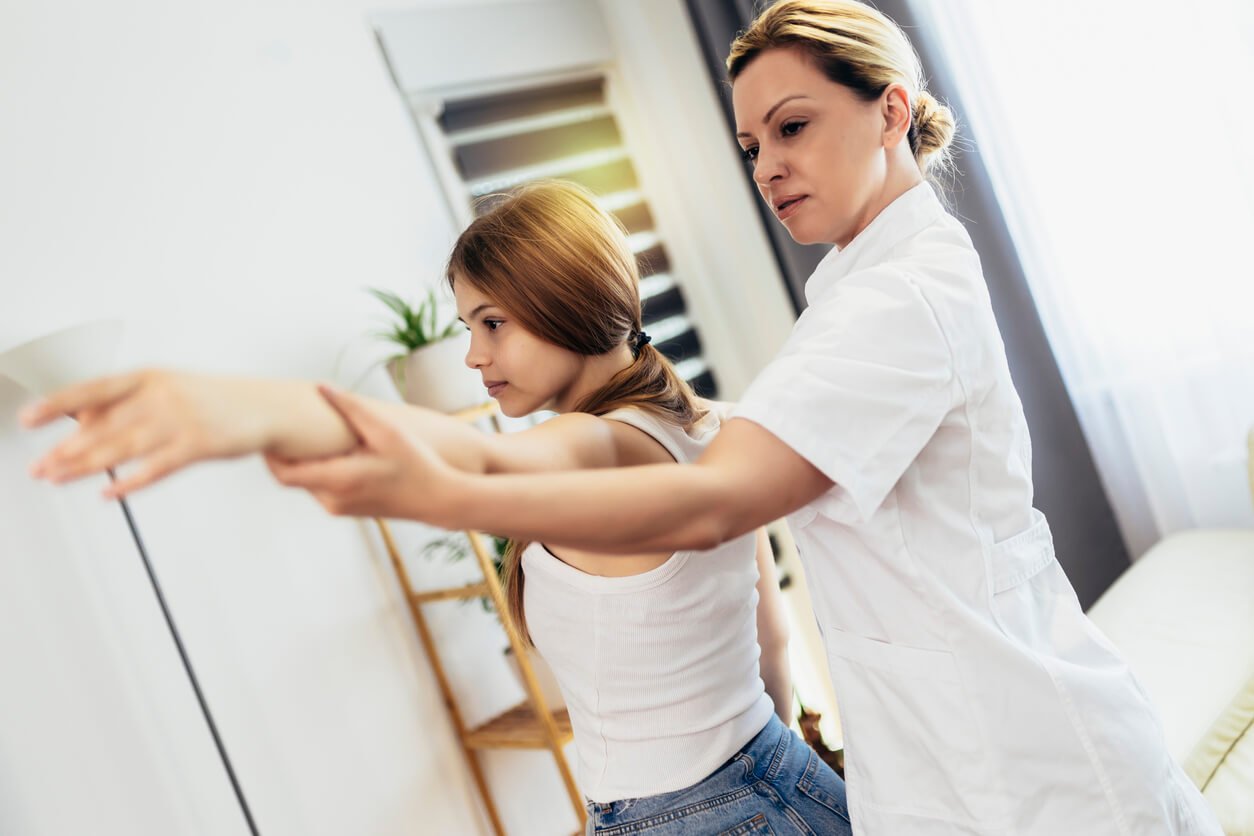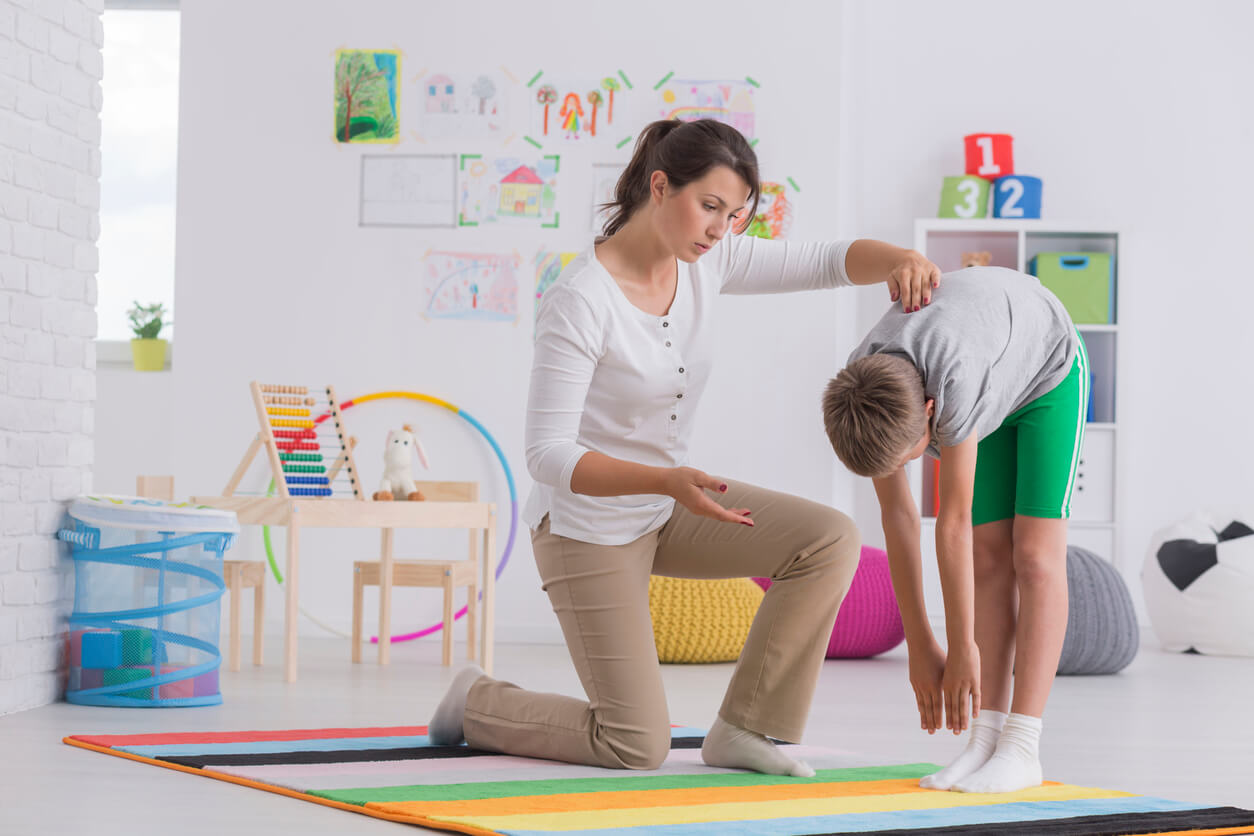Exercises and Stretches for Childhood Scoliosis


Written and verified by the physiotherapist Maria Elisa Lisotti Luppi
Scoliosis is an alteration in the alignment of the spine. This deformity is common in children during the growth stage. Fortunately, physical activity favors the flexibility of the back, thus improving symptoms such as pain. Below, we’ll detail some exercises and stretches to perform in cases of childhood scoliosis.
There are many reasons that can cause an alteration in the alignment of the spine. Among them are factors acquired by trauma or as a result of another disease. There are also congenital causes, i.e., from birth. Therefore, it’s important to differentiate structural scoliosis from functional scoliosis.
Depending on the severity of the deformity, treatments range from an adapted exercise plan to surgical procedures. In milder cases of spinal tilt, the physical therapist will design a program with activities to flex, strengthen, and elongate each sector of the back.
Exercises for childhood scoliosis
Exercises for childhood scoliosis are activities that work different sectors of the spine. In addition, global work can be done, either for the whole back or the whole body, depending on the objective sought. The following exercises are some of those that can be done at home.

All fours
On a padded surface, the activity is performed as follows:
- Support knees hip-width apart and hands shoulder-width apart, with arms outstretched.
- Then, simultaneously raise the left arm and the right leg. You should seek to extend the elevated limbs in a straight line.
- Hold for a few seconds and alternate with the opposite limbs.
Buttocks to the heels
From the same starting position as in the previous exercise, without taking your hands off the floor, bring the buttocks towards the heels. From this position, the aim is to extend the arms and the back as far as possible in a straight line. Also, from the last position, you can perform variations such as extending the arms in diagonal lines. In this way, the lateral areas of the trunk are also made more flexible.
Cross crawl
From the same starting position, perform a cross crawl as follows:
- Advance the hand on one side and the opposite knee.
- The advancing knee is positioned on the inner side of the hand that remained fixed. The knees always slide without losing contact with the floor.
- The arms must advance extended in order to perform a semicircle.
- The head accompanies the movement of the trunk, looking at the shoulder that’s further back.
Stretching for scoliosis in children
Flexibility is the main objective sought when stretching. Stretches should be done gently, seeking a stretching sensation in the area to be worked. Here are two simple options to treat childhood scoliosis:

1. Happy cat, angry cat
From the 4-support position described above, mobilizations of the spine are performed. Initially, the head, neck, and trunk should be aligned in a straight line parallel to the floor. There should be a right angle of 90 degrees between the arms and the trunk.
The following steps should be followed to perform the movement:
- The neck is extended, looking toward the ceiling, while the spine is arched. The navel should be oriented toward the floor.
- Then, the opposite movement is performed: The back is bent towards the ceiling and the chin is oriented toward the chest.
2. Elongation of the posterior muscles
Standing, with your feet supported hip-width apart, the exercise is done as follows:
- Start by bringing the chin toward the chest.
- Then, continue with the curvature of the spine, vertebra by vertebra.
- With arms relaxed and legs outstretched, try to get as close as possible to the ground and hold for a few seconds.
- To return to the starting position, bend your knees slightly. From the pelvis, start the return movement. The last thing to be lifted is the neck and then the head.
Periodic preventive check-ups
Scoliosis is an alteration in the alignment of the spine that doesn’t always cause pain to the sufferer. It’s usually diagnosed during the child’s annual medical check-up. Other times, it’s the parents who observe the deformity in their child’s back. Therefore, it’s essential to carry out preventive medical check-ups that make it possible to detect this type of condition in time.
Once the child is diagnosed, follow-up is essential. Periodic check-ups make it possible to follow the progress of the curvature and determine the most appropriate treatment at each stage. When it comes to mild scoliosis, flexibility, strengthening, and stretching exercises are a great tool to prevent the progression of the deformity.
Scoliosis is an alteration in the alignment of the spine. This deformity is common in children during the growth stage. Fortunately, physical activity favors the flexibility of the back, thus improving symptoms such as pain. Below, we’ll detail some exercises and stretches to perform in cases of childhood scoliosis.
There are many reasons that can cause an alteration in the alignment of the spine. Among them are factors acquired by trauma or as a result of another disease. There are also congenital causes, i.e., from birth. Therefore, it’s important to differentiate structural scoliosis from functional scoliosis.
Depending on the severity of the deformity, treatments range from an adapted exercise plan to surgical procedures. In milder cases of spinal tilt, the physical therapist will design a program with activities to flex, strengthen, and elongate each sector of the back.
Exercises for childhood scoliosis
Exercises for childhood scoliosis are activities that work different sectors of the spine. In addition, global work can be done, either for the whole back or the whole body, depending on the objective sought. The following exercises are some of those that can be done at home.

All fours
On a padded surface, the activity is performed as follows:
- Support knees hip-width apart and hands shoulder-width apart, with arms outstretched.
- Then, simultaneously raise the left arm and the right leg. You should seek to extend the elevated limbs in a straight line.
- Hold for a few seconds and alternate with the opposite limbs.
Buttocks to the heels
From the same starting position as in the previous exercise, without taking your hands off the floor, bring the buttocks towards the heels. From this position, the aim is to extend the arms and the back as far as possible in a straight line. Also, from the last position, you can perform variations such as extending the arms in diagonal lines. In this way, the lateral areas of the trunk are also made more flexible.
Cross crawl
From the same starting position, perform a cross crawl as follows:
- Advance the hand on one side and the opposite knee.
- The advancing knee is positioned on the inner side of the hand that remained fixed. The knees always slide without losing contact with the floor.
- The arms must advance extended in order to perform a semicircle.
- The head accompanies the movement of the trunk, looking at the shoulder that’s further back.
Stretching for scoliosis in children
Flexibility is the main objective sought when stretching. Stretches should be done gently, seeking a stretching sensation in the area to be worked. Here are two simple options to treat childhood scoliosis:

1. Happy cat, angry cat
From the 4-support position described above, mobilizations of the spine are performed. Initially, the head, neck, and trunk should be aligned in a straight line parallel to the floor. There should be a right angle of 90 degrees between the arms and the trunk.
The following steps should be followed to perform the movement:
- The neck is extended, looking toward the ceiling, while the spine is arched. The navel should be oriented toward the floor.
- Then, the opposite movement is performed: The back is bent towards the ceiling and the chin is oriented toward the chest.
2. Elongation of the posterior muscles
Standing, with your feet supported hip-width apart, the exercise is done as follows:
- Start by bringing the chin toward the chest.
- Then, continue with the curvature of the spine, vertebra by vertebra.
- With arms relaxed and legs outstretched, try to get as close as possible to the ground and hold for a few seconds.
- To return to the starting position, bend your knees slightly. From the pelvis, start the return movement. The last thing to be lifted is the neck and then the head.
Periodic preventive check-ups
Scoliosis is an alteration in the alignment of the spine that doesn’t always cause pain to the sufferer. It’s usually diagnosed during the child’s annual medical check-up. Other times, it’s the parents who observe the deformity in their child’s back. Therefore, it’s essential to carry out preventive medical check-ups that make it possible to detect this type of condition in time.
Once the child is diagnosed, follow-up is essential. Periodic check-ups make it possible to follow the progress of the curvature and determine the most appropriate treatment at each stage. When it comes to mild scoliosis, flexibility, strengthening, and stretching exercises are a great tool to prevent the progression of the deformity.
All cited sources were thoroughly reviewed by our team to ensure their quality, reliability, currency, and validity. The bibliography of this article was considered reliable and of academic or scientific accuracy.
- Regalado Contreras, Andrea Cristina. Ejercicios terapéuticos acuáticos en niños de 3 A 4 años con escoliosis de la Fundación Cariño. BS thesis. Universidad de Guayaquil. Facultad de Educación Fisica Deporte y Recreación, 2018.
- Marín Vega, Gabriela. “Escoliosis: Enfoque en terapia manual ortopédica.” (2018).
- Chiguano Morales, Juan Miguel. Ejercicios físicos terapeúticos en adolescentes de 10-12 años con escoliosis cervical de la Unidad Educactiva Academia Naval Guayaquil. BS thesis. 2018.
- González, Adriana Mederos, and Juan Francisco Rojas Puig. “La escoliosis y los beneficios de los ejercicios físicos al organismo.” Anatomía Digital 2.2 (2019): 43-60.
- González, Naidelin Alonso, Eugenio González Pérez, and Juan Francisco Rojas Puig. “Enfoque actual en la rehabilitación de la escoliosis.” Anatomía Digital 2.3 (2019): 6-17.
- Burga Castro, Julissa del Carmen. “Tratamiento fisioterapéutico en escoliosis en S compensada.” (2020).
This text is provided for informational purposes only and does not replace consultation with a professional. If in doubt, consult your specialist.








